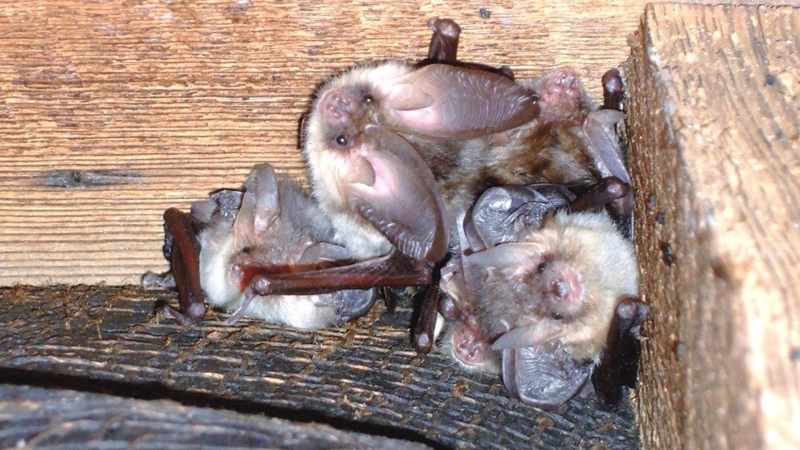Protecting and enhancing wildlife across the Historical Railway Estate

Share this article
We care for more than 3,000 historic railway structures across England, Wales, and Scotland. These structures, once part of Britain's rail network, are known as the Historical Railway Estate. Over many years, they've become home to a wide variety of wildlife.
Keeping these structures (some dating back as far as the 19th century) safe and sound involves regular maintenance and assessment. We work closely with ecologists to make sure our work doesn't affect wildlife. Where we can, we try to make conditions better.
Animals big and small find shelter in tunnels, bridges and culverts - from snails and newts to falcons, badgers - and bats.
Do not disturb
This spring, while surveying a 19th century railway tunnel we found a colony of 169 Horseshoe bats.
They were deep in hibernation only 60m from the tunnel entrance - where we had to replace a damaged access door.
Tunnels are dark with an even temperature - ideal for bats to hibernate. In hibernation a bat's body temperature drops. It's metabolic rate slows so it can survive on stored fat.
Waking from hibernation too early can cause bats to lose a lot of energy, and in turn body fat. This can mean that bats starve and die.
For the bats' welfare, our ecologists advised us to replace the access door after the hibernation season.
This April, we fitted a new weather-resistant door to the tunnel. Grates in the door allow bats to come and go while keeping trespassers out.
New homes
As well as minimising disturbance, we try to improve conditions for the wildlife we find.
Prior to starting recent repairs on a Yorkshire viaduct, our ecologists found five pipistrelle bats living in the structure. As part of our work, we installed 6 bat tubes to give them more potential roosts.
Bat tubes are small enough for bats to enter, but not predators.
Learn more about biodiversity on the Historical Railway Estate.
